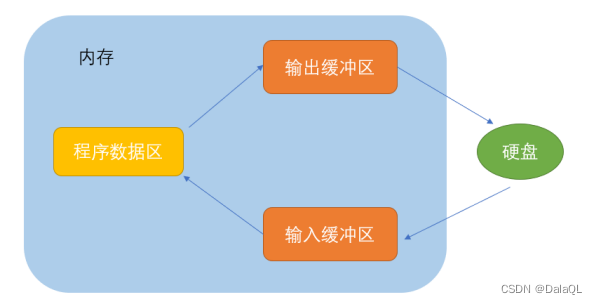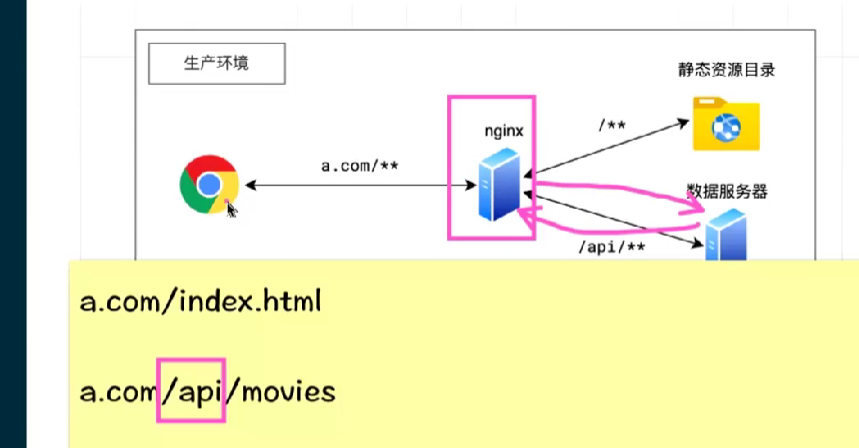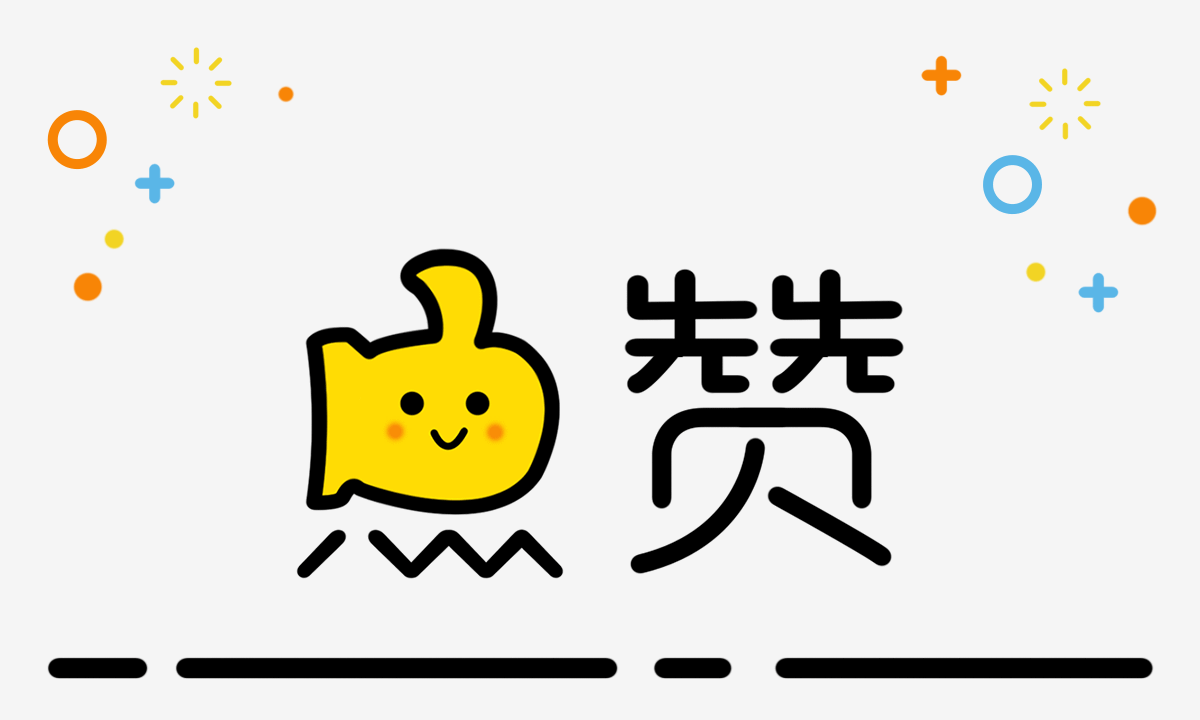目录:
- 扩展1_setState
- 扩展2_lazyLoad
- 扩展3_stateHook
- 扩展4_EffectHook
- 扩展5_RefHook
- 扩展6_Fragment
- 扩展7_Context
- 扩展8_PureComponent
- 扩展9_renderProps
- 扩展10_ErrorBoundary
- 组件通信方式总结
1.扩展1_setState
setState更新状态的2种写法
- setState(stateChange, [callback])------对象式的setState
- 1.stateChange为状态改变对象(该对象可以体现出状态的更改)
- 2.callback是可选的回调函数, 它在状态更新完毕、界面也更新后(render调用后)才被调用
- setState(updater, [callback])------函数式的setState
- 1.updater为返回stateChange对象的函数。
- 2.updater可以接收到state和props。
- 3.callback是可选的回调函数, 它在状态更新、界面也更新后(render调用后)才被调用。
- 总结:
- 1.对象式的setState是函数式的setState的简写方式(语法糖)
- 2.使用原则:
- (1).如果新状态不依赖于原状态 ===> 使用对象方式
- (2).如果新状态依赖于原状态 ===> 使用函数方式
- (3).如果需要在setState()执行后获取最新的状态数据,
- 要在第二个callback函数中读取
Demo.jsx
import React, {Component} from 'react';class Demo extends Component {state = {count: 0}add = () => {//对象式的setState// const {count} = this.state// this.setState({count: count + 1}, () => {// console.log(this.state.count)// })// // console.log('12行的输出', this.state.count)//函数式的setState// this.setState((state, props) => {// console.log(state, props)// return {count: state.count + 1}// })this.setState(state => ({count: state.count + 1}), () => {console.log(this.state.count)})// this.setState({count: this.state.count + 1})}render() {return (<div><h1>当前求和为:{this.state.count}</h1><button onClick={this.add}>点我+1</button></div>);}
}export default Demo;2.扩展2_lazyLoad
路由组件的lazyLoad
//1.通过React的lazy函数配合import()函数动态加载路由组件 ===> 路由组件代码会被分开打包const Login = lazy(()=>import('@/pages/Login'))//2.通过<Suspense>指定在加载得到路由打包文件前显示一个自定义loading界面<Suspense fallback={<h1>loading.....</h1>}><Switch><Route path="/xxx" component={Xxxx}/><Redirect to="/login"/></Switch></Suspense>About.jsx
import React, {Component} from 'react';class About extends Component {render() {return (<div><h3>我是About的内容</h3></div>);}
}export default About;Demo.jsx
import React, {Component, lazy, Suspense} from 'react';
import {NavLink, Route} from "react-router-dom";
import Loading from "../Loading/Loading";const Home = lazy(() => import('../Home/Home'))
const About = lazy(() => import('../About/About'))class Demo extends Component {render() {return (<div><div className="row"><div className="col-xs-offset-2 col-xs-8"><div className="page-header"><h2>React Router Demo</h2></div></div></div><div className="row"><div className="col-xs-2 col-xs-offset-2"><div className="list-group"><NavLink className="list-group-item" to="/about">About</NavLink><NavLink className="list-group-item" to="/home">Home</NavLink></div></div><div className="col-xs-6"><div className="panel"><div className="panel-body"><Suspense fallback={<Loading></Loading>}><Route path="/about" component={About}></Route><Route path="/home" component={Home}></Route></Suspense></div></div></div></div></div>);}
}export default Demo;Home.jsx
import React, {Component} from 'react';class Home extends Component {render() {return (<div><h3>我是Home的内容</h3></div>);}
}export default Home;Loading.jsx
import React, {Component} from 'react';class Loading extends Component {render() {return (<div><h1 style={{backgroundColor: 'gray', color: 'orange'}}>Loading</h1></div>);}
}export default Loading;App.js
import React, {Component} from 'react';
import Demo from "./components/Demo/Demo";class App extends Component {render() {return (<div><Demo></Demo></div>);}
}export default App;index.js
import React from 'react';
import ReactDOM from 'react-dom/client';
import App from './App';
import {BrowserRouter} from "react-router-dom";const root = ReactDOM.createRoot(document.getElementById('root'));root.render(<BrowserRouter><App/></BrowserRouter>
);
3.扩展3_stateHook
React Hook/Hooks是什么?
- Hook是React 16.8.0版本增加的新特性/新语法
- 可以让你在函数组件中使用 state 以及其他的 React 特性
三个常用的Hook
- State Hook: React.useState()
- Effect Hook: React.useEffect()
- Ref Hook: React.useRef()
State Hook
- State Hook让函数组件也可以有state状态, 并进行状态数据的读写操作
- 语法: const [xxx, setXxx] = React.useState(initValue)
- useState()说明:
- 参数: 第一次初始化指定的值在内部作缓存
- 返回值: 包含2个元素的数组, 第1个为内部当前状态值, 第2个为更新状态值的函数
- setXxx()2种写法:
- setXxx(newValue): 参数为非函数值, 直接指定新的状态值, 内部用其覆盖原来的状态值
- setXxx(value => newValue): 参数为函数, 接收原本的状态值, 返回新的状态值, 内部用其覆盖原来的状态值
Demo.jsx
import React, {Component} from 'react';// class Demo extends Component {
// state = {count: 0}
//
// add = () => {
// this.setState(state => ({count: state.count + 1}))
// }
//
// render() {
// return (
// <div>
// <h2>当前求和为{this.state.count}</h2>
// <button onClick={this.add}>点我+1</button>
// </div>
// );
// }
// }function Demo() {const [count, setCount] = React.useState(0)const [name, setName] = React.useState('tom')function add() {// setCount(count + 1)setCount((count) => {return count + 1})}function changeName() {// setName('jack')setName((name) => {return 'jack'})}return (<div><h2>当前求和为{count}</h2><h2>我的名字是:{name}</h2><button onClick={add}>点我+1</button><button onClick={changeName}>点我改名</button></div>)
}export default Demo;4.扩展4_EffectHook
- Effect Hook 可以让你在函数组件中执行副作用操作(用于模拟类组件中的生命周期钩子)
- React中的副作用操作:
- 发ajax请求数据获取
- 设置订阅 / 启动定时器
- 手动更改真实DOM
- 语法和说明:
- useEffect(() => {
- // 在此可以执行任何带副作用操作
- return () => { // 在组件卸载前执行
- // 在此做一些收尾工作, 比如清除定时器/取消订阅等
- }
- }, [stateValue]) // 如果指定的是[], 回调函数只会在第一次render()后执行
- 可以把 useEffect Hook 看做如下三个函数的组合
- componentDidMount()
- componentDidUpdate()
- componentWillUnmount()
Demo.jsx
import React, {Component} from 'react';
import ReactDOM from 'react-dom';// class Demo extends Component {
// state = {count: 0}
//
// add = () => {
// this.setState(state => ({count: state.count + 1}))
// }
//
// unmount = () => {
// ReactDOM.unmountComponentAtNode(document.getElementById('root'))
// }
//
// componentDidMount() {
// this.timer = setInterval(() => {
// this.setState(state => ({count: state.count + 1}))
// }, 1000)
// }
//
// componentWillUnmount() {
// clearInterval(this.timer)
// }
//
// render() {
// return (
// <div>
// <h2>当前求和为{this.state.count}</h2>
// <button onClick={this.add}>点我+1</button>
// <button onClick={this.unmount}>卸载组件</button>
// </div>
// );
// }
// }function Demo() {const [count, setCount] = React.useState(0)React.useEffect(() => {let timer = setInterval(() => {setCount(count => count + 1)}, 1000)return () => {clearInterval(timer)}}, [])function add() {setCount(count + 1)}function unmount() {ReactDOM.unmountComponentAtNode(document.getElementById('root'))}return (<div><h2>当前求和为{count}</h2><button onClick={add}>点我+1</button><button onClick={unmount}>卸载组件</button></div>)
}export default Demo;5.扩展5_RefHook
- Ref Hook可以在函数组件中存储/查找组件内的标签或任意其它数据
- 语法: const refContainer = useRef()
- 作用:保存标签对象,功能与React.createRef()一样
Demo.jsx
import React, {Component} from 'react';
import ReactDOM from 'react-dom';// class Demo extends Component {
// state = {count: 0}
//
// myRef = React.createRef()
//
// add = () => {
// this.setState(state => ({count: state.count + 1}))
// }
//
// unmount = () => {
// ReactDOM.unmountComponentAtNode(document.getElementById('root'))
// }
//
// show = () => {
// alert(this.myRef.current.value)
// }
//
// componentDidMount() {
// this.timer = setInterval(() => {
// this.setState(state => ({count: state.count + 1}))
// }, 1000)
// }
//
// componentWillUnmount() {
// clearInterval(this.timer)
// }
//
// render() {
// return (
// <div>
// <input type="text" ref={this.myRef}/>
// <h2>当前求和为{this.state.count}</h2>
// <button onClick={this.add}>点我+1</button>
// <button onClick={this.unmount}>卸载组件</button>
// <button onClick={this.show}>点击提示数据</button>
// </div>
// );
// }
// }function Demo() {const [count, setCount] = React.useState(0)const myRef = React.useRef()React.useEffect(() => {let timer = setInterval(() => {setCount(count => count + 1)}, 1000)return () => {clearInterval(timer)}}, [])function add() {setCount(count + 1)}function show() {alert(myRef.current.value)}function unmount() {ReactDOM.unmountComponentAtNode(document.getElementById('root'))}return (<div><input type="text" ref={myRef}/><h2>当前求和为{count}</h2><button onClick={add}>点我+1</button><button onClick={unmount}>卸载组件</button><button onClick={show}>点我提示数据</button></div>)
}export default Demo;6.扩展6_Fragment
作用
可以不用必须有一个真实的DOM根标签了
Demo.jsx
import React, {Component, Fragment} from 'react';class Demo extends Component {render() {return (<Fragment key={1}><input type="text"/><input type="text"/></Fragment>);}
}export default Demo;7.扩展7_Context
理解
一种组件间通信方式, 常用于【祖组件】与【后代组件】间通信
使用
- 创建Context容器对象:
- const XxxContext = React.createContext()
- 渲染子组时,外面包裹xxxContext.Provider, 通过value属性给后代组件传递数据:
- <xxxContext.Provider value={数据}>
- 子组件
- </xxxContext.Provider>
- 后代组件读取数据:
- //第一种方式:仅适用于类组件
- static contextType = xxxContext // 声明接收context
- this.context // 读取context中的value数据
- //第二种方式: 函数组件与类组件都可以
- <xxxContext.Consumer>
- {
- value => ( // value就是context中的value数据
- 要显示的内容
- )
- }
- </xxxContext.Consumer>
- //第一种方式:仅适用于类组件
注意
- 在应用开发中一般不用context, 一般都用它的封装react插件react-redux
Demo.jsx
import React, {Component} from 'react';
import './Demo.css'const MyContext = React.createContext()
const {Provider, Consumer} = MyContext
export default class A extends Component {state = {username: 'tom', age: 18}render() {const {username, age} = this.statereturn (<div className="parent"><h3>我是A组件</h3><h4>我的用户名是:{username}</h4><Provider value={{username, age}}><B></B></Provider></div>);}
}class B extends Component {render() {return (<div className="child"><h3>我是B组件</h3><C></C></div>);}
}// class C extends Component {
// static contextType = MyContext
//
// render() {
// const {username, age} = this.context
// return (
// <div className="grand">
// <h3>我是C组件</h3>
// <h4>我从A组件接收到的用户名:{username},年龄是{age}</h4>
// </div>
// );
// }
// }function C() {return (<div className="grand"><h3>我是C组件</h3><h4>我从A组件接收到的用户名:<Consumer>{value => {return `${value.username},年龄是${value.age}`}}</Consumer></h4></div>)
}Demo.css
.parent {width: 500px;background-color: orange;padding: 8px;
}.child {width: 100%;background-color: skyblue;padding: 8px;
}.grand {width: 100%;background-color: gray;padding: 8px;
}8.扩展8_PureComponent
组件优化
- Component的2个问题
- 只要执行setState(,即使不改变状态数据,组件也会重新render()
- 只当前组件重新render(),就会自动重新render子组件==>效率低
- 效率高的做法
- 只有当组件的state或props数据发生改变时才重新render()
原因
- Component中的shouldComponentUpdate()总是返回true
解决
- 办法1:
- 重写shouldComponentUpdate()方法
- 比较新旧state或props数据,如果有变化才返回true,如果没有返回false
- 办法2:
- 使用Pur eComponent
- PureComponent重写了shouldComponentUpdate(),只有state或props数据有变化才返回true
- 注意:
- 只是进行state和props数据的浅比较,如果只是数据对象内部数据变了,返回fa1se不要直接修改stat e数据,而是要产生新数据
- 项目中一般使用PureComponent来优化
办法一:Demo.jsx
import React, {Component} from 'react';
import './Demo.css'class Parent extends Component {state = {carName: "奔驰c36"}changeCar = () => {this.setState({})}shouldComponentUpdate(nextProps, nextState, nextContext) {console.log(this.props, this.state, 'Parent')console.log(nextProps, nextState, 'Parent')return !this.state.carName === nextState.carName}render() {console.log('Parent--render')const {carName} = this.statereturn (<div className="parent"><h3>我是Parent组件</h3><span>我的车名字是:{carName}</span><br></br><button onClick={this.changeCar}>点我换车</button><Child carName={carName}></Child></div>);}
}class Child extends Component {shouldComponentUpdate(nextProps, nextState, nextContext) {console.log(this.props, this.state, 'Child')console.log(nextState, nextState, 'Child')return !this.props.carName === nextState.carName}render() {console.log('Child--render')return (<div className="child"><h3>我是Child组件</h3><span>我接到的车是:{this.props.carName}</span></div>);}
}export default Parent;Demo.css
.parent {background-color: orange;padding: 10px;
}.child {background-color: gray;margin-top: 30px;padding: 10px;
}办法二:Demo.jsx
import React, {PureComponent} from 'react';
import './Demo.css'class Parent extends PureComponent {state = {carName: "奔驰c36", stus: ['小张', '小李', '小王']}addStu = () => {// const {stus} = this.state// stus.unshift('小刘')// this.setState({stus: stus})const {stus} = this.statethis.setState({stus: ['小刘', ...stus]})}changeCar = () => {// this.setState({carName: "迈巴赫"})const obj = this.stateobj.carName = '迈巴赫'console.log(obj === this.state)this.setState(obj)}// shouldComponentUpdate(nextProps, nextState, nextContext) {// console.log(this.props, this.state, 'Parent')// console.log(nextProps, nextState, 'Parent')// return !this.state.carName === nextState.carName// }render() {console.log('Parent--render')const {carName} = this.statereturn (<div className="parent"><h3>我是Parent组件</h3>{this.state.stus} <span>我的车名字是:{carName}</span><br></br><button onClick={this.changeCar}>点我换车</button><button onClick={this.addStu}>添加一个小刘</button><Child carName="奥拓"></Child></div>);}
}class Child extends PureComponent {// shouldComponentUpdate(nextProps, nextState, nextContext) {// console.log(this.props, this.state, 'Child')// console.log(nextState, nextState, 'Child')// return !this.props.carName === nextState.carName// }render() {console.log('Child--render')return (<div className="child"><h3>我是Child组件</h3><span>我接到的车是:{this.props.carName}</span></div>);}
}export default Parent;9.扩展9_renderProps
如何向组件内部动态传入带内容的结构(标签)?
- vue中:
- 使用slot技术,也就是通过组件标签体传入结构<A><B/></A>
- React中:
- 使用children props:通过组件标签体传入结构
- 使用render props:通过组件标签属性传入结构,一般用render函数属性
children props
- <A>
- <B>XXXX</B>
- </A>
- {this.props.children}
- 问题:如果B组件需要A组件内的数据,==>做不到
render props
- <A render={(data) => <C data={data}></C>}></A>
- A组件: {this.props.render (内部state数据)}
- c组件:读取A组件传入的数据显示 {this.props.data}
Demo.jsx
import React, {Component} from 'react';
import './Demo.css'class Parent extends Component {render() {return (<div className="parent"><h3>我是Parent组件</h3><A render={(name) => <B name={name}></B>}></A></div>);}
}class A extends Component {state = {name: 'tom'}render() {const {name} = this.statereturn (<div className="a"><h3>我是A组件</h3>{this.props.render(name)}</div>)}
}class B extends Component {render() {return (<div className="b"><h3>我是B组件,{this.props.name}</h3></div>)}
}export default Parent;Demo.css
.parent {background-color: orange;padding: 10px;
}.a {background-color: gray;margin-top: 30px;padding: 10px;
}.b {background-color: skyblue;margin-top: 30px;padding: 10px;
}10.扩展10_ErrorBoundary
理解:
- 错误边界(Error bojundary):用来捕获后代组件错误,渲染出备用页面
特点:
- 只能捕获后代组件生命周期产生的错误,不能捕获自己组件产生的错误和其他组件在合成事件、定时器中产生的错误
使用方式:
- getDerivedStateFromError配合componentDidCatch
// 生命周期函数,一旦后代组件报错,就会触发
static getDerivedStateFromError(error) {console.log(error);// 在render之前触发// 返回新的statereturn {hasError: true,};
}componentDidCatch(error, info) {// 统计页面的错误。发送请求发送到后台去console.log(error, info);
}Parent.jsx
import React, {Component} from 'react';
import Child from "./Child";class Parent extends Component {state = {hasError: ''}//当Parent的子组件出现报错时候,会触发getDerivedStateFromError调用,并携带错误信息static getDerivedStateFromError(error) {console.log(error)return {hasError: error}}componentDidCatch(error, errorInfo) {console.log('渲染组件时出错')}render() {return (<div><h2>我是Parent组件</h2>{this.state.hasError ? <h2>当前网络不稳定,稍后再试</h2> : <Child></Child>}</div>);}
}export default Parent;Child.jsx
import React, {Component} from 'react';class Child extends Component {state = {// users: [// {id: '001', name: 'tom', age: 18},// {id: '002', name: 'jack', age: 19},// {id: '003', name: 'peiqi', age: 20},// ]users: 'abc'}render() {return (<div><h2>我是Child组件</h2>{this.state.users.map((userObj) => {return <h4 key={userObj.id}>{userObj.name}-----{userObj.age}</h4>})}</div>);}
}export default Child;11.组件通信方式总结
组件间的关系:
- 父子组件
- 兄弟组件(非嵌套组件)
- 祖孙组件(跨级组件)
几种通信方式:
1.props:(1).children props(2).render props2.消息订阅-发布:pubs-sub、event等等3.集中式管理:redux、dva等等4.conText:生产者-消费者模式比较好的搭配方式:
- 父子组件:props
- 兄弟组件:消息订阅-发布、集中式管理
- 祖孙组件(跨级组件):消息订阅-发布、集中式管理、conText(开发用的少,封装插件用的多)







